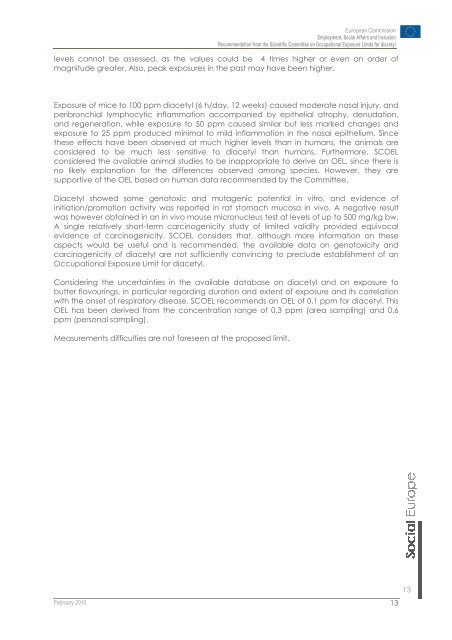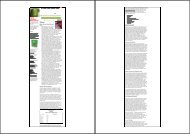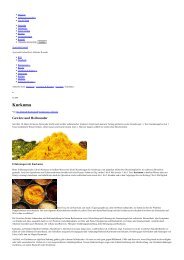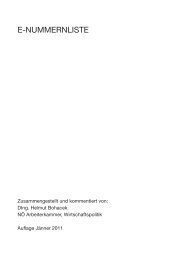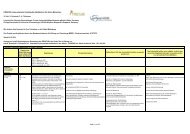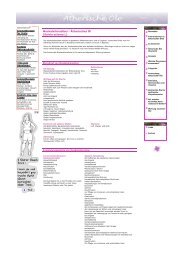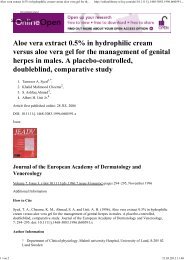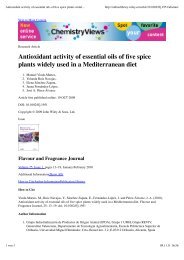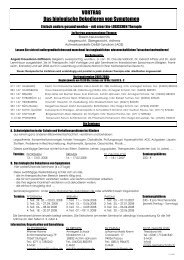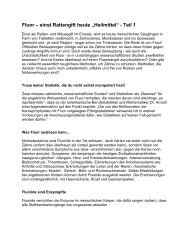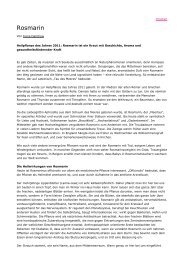Recommendation from the Scientific Committee on Occupational ...
Recommendation from the Scientific Committee on Occupational ...
Recommendation from the Scientific Committee on Occupational ...
Create successful ePaper yourself
Turn your PDF publications into a flip-book with our unique Google optimized e-Paper software.
February 2010<br />
European Commissi<strong>on</strong><br />
Employment, Social Affairs and Inclusi<strong>on</strong><br />
<str<strong>on</strong>g>Recommendati<strong>on</strong></str<strong>on</strong>g> <str<strong>on</strong>g>from</str<strong>on</strong>g> <str<strong>on</strong>g>the</str<strong>on</strong>g> <str<strong>on</strong>g>Scientific</str<strong>on</strong>g> <str<strong>on</strong>g>Committee</str<strong>on</strong>g> <strong>on</strong> Occupati<strong>on</strong>al Exposure Limits for diacetyl<br />
levels cannot be assessed, as <str<strong>on</strong>g>the</str<strong>on</strong>g> values could be 4 times higher or even an order of<br />
magnitude greater. Also, peak exposures in <str<strong>on</strong>g>the</str<strong>on</strong>g> past may have been higher.<br />
Exposure of mice to 100 ppm diacetyl (6 h/day, 12 weeks) caused moderate nasal injury, and<br />
peribr<strong>on</strong>chial lymphocytic inflammati<strong>on</strong> accompanied by epi<str<strong>on</strong>g>the</str<strong>on</strong>g>lial atrophy, denudati<strong>on</strong>,<br />
and regenerati<strong>on</strong>, while exposure to 50 ppm caused similar but less marked changes and<br />
exposure to 25 ppm produced minimal to mild inflammati<strong>on</strong> in <str<strong>on</strong>g>the</str<strong>on</strong>g> nasal epi<str<strong>on</strong>g>the</str<strong>on</strong>g>lium. Since<br />
<str<strong>on</strong>g>the</str<strong>on</strong>g>se effects have been observed at much higher levels than in humans, <str<strong>on</strong>g>the</str<strong>on</strong>g> animals are<br />
c<strong>on</strong>sidered to be much less sensitive to diacetyl than humans. Fur<str<strong>on</strong>g>the</str<strong>on</strong>g>rmore, SCOEL<br />
c<strong>on</strong>sidered <str<strong>on</strong>g>the</str<strong>on</strong>g> available animal studies to be inappropriate to derive an OEL, since <str<strong>on</strong>g>the</str<strong>on</strong>g>re is<br />
no likely explanati<strong>on</strong> for <str<strong>on</strong>g>the</str<strong>on</strong>g> differences observed am<strong>on</strong>g species. However, <str<strong>on</strong>g>the</str<strong>on</strong>g>y are<br />
supportive of <str<strong>on</strong>g>the</str<strong>on</strong>g> OEL based <strong>on</strong> human data recommended by <str<strong>on</strong>g>the</str<strong>on</strong>g> <str<strong>on</strong>g>Committee</str<strong>on</strong>g>.<br />
Diacetyl showed some genotoxic and mutagenic potential in vitro, and evidence of<br />
initiati<strong>on</strong>/promoti<strong>on</strong> activity was reported in rat stomach mucosa in vivo. A negative result<br />
was however obtained in an in vivo mouse micr<strong>on</strong>ucleus test at levels of up to 500 mg/kg bw.<br />
A single relatively short-term carcinogenicity study of limited validity provided equivocal<br />
evidence of carcinogenicity. SCOEL c<strong>on</strong>siders that, although more informati<strong>on</strong> <strong>on</strong> <str<strong>on</strong>g>the</str<strong>on</strong>g>se<br />
aspects would be useful and is recommended, <str<strong>on</strong>g>the</str<strong>on</strong>g> available data <strong>on</strong> genotoxicity and<br />
carcinogenicity of diacetyl are not sufficiently c<strong>on</strong>vincing to preclude establishment of an<br />
Occupati<strong>on</strong>al Exposure Limit for diacetyl.<br />
C<strong>on</strong>sidering <str<strong>on</strong>g>the</str<strong>on</strong>g> uncertainties in <str<strong>on</strong>g>the</str<strong>on</strong>g> available database <strong>on</strong> diacetyl and <strong>on</strong> exposure to<br />
butter flavourings, in particular regarding durati<strong>on</strong> and extent of exposure and its correlati<strong>on</strong><br />
with <str<strong>on</strong>g>the</str<strong>on</strong>g> <strong>on</strong>set of respiratory disease, SCOEL recommends an OEL of 0.1 ppm for diacetyl. This<br />
OEL has been derived <str<strong>on</strong>g>from</str<strong>on</strong>g> <str<strong>on</strong>g>the</str<strong>on</strong>g> c<strong>on</strong>centrati<strong>on</strong> range of 0.3 ppm (area sampling) and 0.6<br />
ppm (pers<strong>on</strong>al sampling).<br />
Measurements difficulties are not foreseen at <str<strong>on</strong>g>the</str<strong>on</strong>g> proposed limit.<br />
13<br />
13


